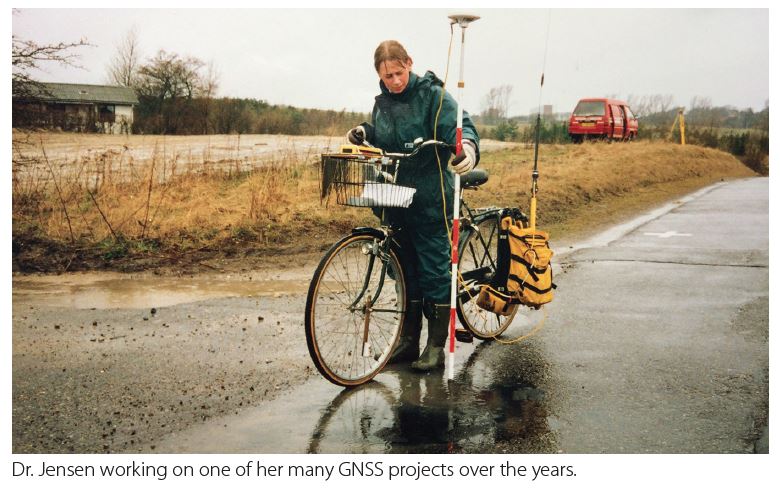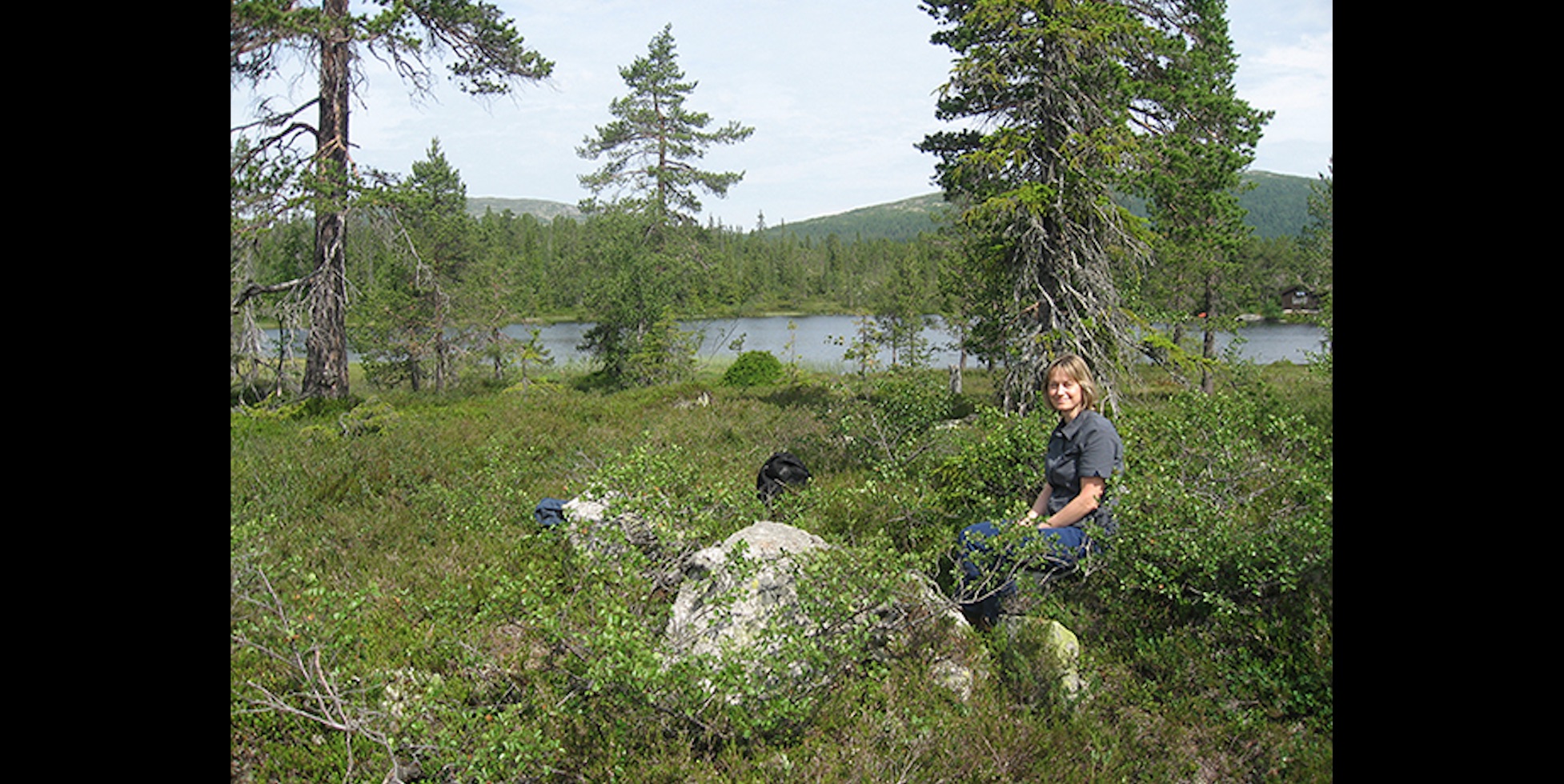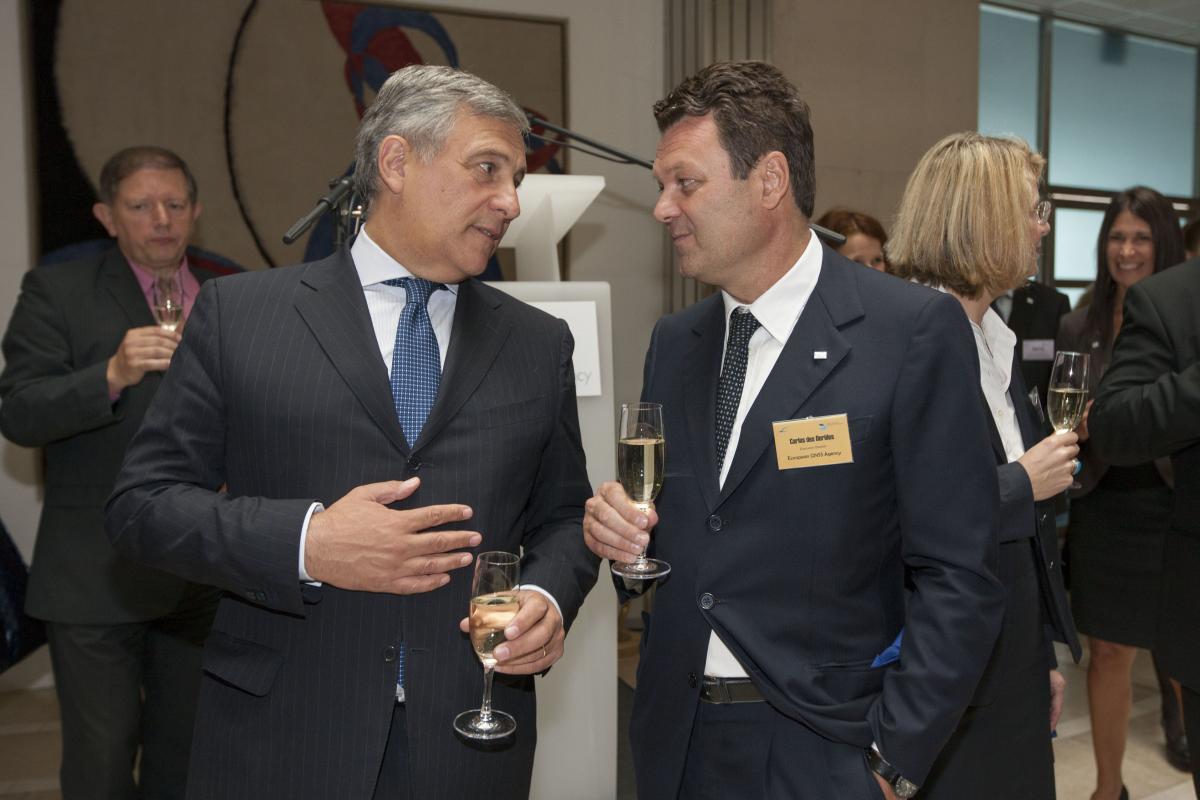From the Scandinavian farmlands to the hallowed halls of academia, Dr. Anna Jensen has traveled a remarkable road. She has now spent more than 20 years in GNSS research, development, teaching and consulting, focusing on GPS, Galileo, EGNOS, and GLONASS.
Given the tree from which she fell, it was perhaps to be expected that Anna Jensen should turn out to be no ordinary apple.
Anna’s father, Jens Jensen, spent much of his early life as a farm worker. “My dad grew up in a small village in Denmark,” she told Inside GNSS. “He liked school very much, but had to leave at the age of 14 to work on farms. He spent time in the military and also worked on farms in France and the U.S.”
Anna’s mother, Birgitta, Anna said, was basically the opposite. “Mom was a city-girl who grew up in an apartment in Malmo, Sweden, in a middle class family. She had a degree in home economics and worked as a teacher, and she was always very interested in fine arts and music.”
Anna’s father saved money and took evening courses, eventually entering university himself, where he earned an M.Sc. in agriculture. And like the salmon that returns to the stream where it first saw light, he found his way back to the landscape of his youth, to the calm and fertile Danish countryside, where he bought a small farm.
One evening, no doubt feeling the need to celebrate his good fortune, Jens got dressed up, went out to raise a little dust, and hit the jackpot.
Anna explained, “My mother had been working as a teacher in the Swedish city of Gothenburg when she got a continuing education grant that allowed her to study for a few months in Aarhus, close to where my father had his farm.” As chance would have it, Jens and Birgitta chose the same dancehall on the same evening, and the rest, as they say, is history.
The Jensens exchanged vows and settled down to raise a family, including two daughters and a son. Birgitta was now officially a farm wife, but, all the same, she made sure her children learned to play the piano.

“Our closest neighbor had a dairy farm, and there were some woods a short walk from the house,” said Anna. “It was classical Danish farmland, with the nearest village and the nearest children of my age two kilometers away.”
The Jensen farm was small, not enough to sustain the family, she said. “So growing crops was really a hobby for my father. His real work was as a farming consultant, a job he did for many years. And then he also spent basically all of his free time working on our own and my grandparents’ farms, so if we children wanted to spend time with him, we had to go along, which we did.”
Though the district around their home was delightfully countrified, they were still less than an hour’s drive from Aarhus, the local metropolis of about 350,000 people. So Anna’s mother was able to maintain a very active cultural life, often going to the theater or to classical concerts in the nearby city.
“Harvest time in August and September was always special,” Anna recalled. “There was a hectic but good atmosphere. There was lots of work to do, everybody was helping as best they could, neighbors supporting each other, combines running in the middle of the night, tension around the weather. Will it rain or won’t it? And at the same time there were sweet apples to eat right from trees in the orchards.
“One’s relationship to nature, the open sky, and the way you could follow the seasons by the vegetation, these are some of my dearest memories of growing up.”
The stage being set, it was time for little Anna to come into her own.
Joining the Two Ends
Today, the farm child, the country girl who played piano and read books, is Professor Anna B.O. Jensen, a woman standing at the top rung of navigation and positioning science and technology.
“Perhaps the distance between farming and science/engineering is not so great after all,” she mused. “You think about what farmers do in their fields. For instance, when they put down fertilizer and then compare the effects across spots that got enough or too little. This is surely a kind of science.”
Down on the farm, Anna had learned about machines and how to fix things yourself. “I watched my father work on complex equipment,” she said, “everything from lawn mowers to tractors and combine harvesters. He taught to me how to study things and figure out how they work, by following cables or gears to see how different parts interact with each other.
“The most important thing, I think, in terms of how far I have come in life, was really the determination shown by my parents. My mother always told me and my sister that we could do as well as the boys and she encouraged us to climb trees and play soccer. It was important for her that we were not limited by conventional ideas about ‘girls jobs’.
“My sister and I are very close in age, and we had lots of fun as children, but most of the time there was also some competition going on. For instance, my sister often got better marks than I did in school, which she would point out. But then I was one year ahead of her, so she always knew what she was up against.
“To my father, who’d had a hard time getting himself into university, it was important that my siblings and I got an education, and he encouraged us to do science.” And so she did. Anna’s first university degree was a B.Sc. in land surveying, which she received from the University of Aalborg in 1992.
The turning point that led her to satellite-based navigation, she said, her “GNSS Aha!” moment, came when she was an undergraduate. “I was working on a project with the new Ashtech P12 receivers that had just been acquired by the university. We had lots of problems and never managed to produce a position from the data collected. But during the process of trying to solve the problems I started reading a lot about GPS and was very fascinated by the technology. It was the first time I really dug into an assignment – not because I had to, but because it was interesting.”
Later, in 1993, while studying for a Master’s degree, she spent time as a visiting student at the University of Calgary, where she took a course in GNSS under Professor Gérard Lachapelle. It was then, she said, that she truly “fell in love” with the technology. “It was really inspiring, not only the course itself, but also to work with other students who were ‘caught’ by GNSS. This was when I decided to pursue a career in the field.”

In 1994, Jensen completed her M.Sc. also at Aalborg, and from there she went to work. “I started in GNSS as a professional with the Danish company GPService, where my job was to develop a logging software for NovAtel OEM cards. The software had to run on a hand-held computer with a Danish-language interface, to be used in typical land surveyor tasks. The logging software was to interface with a post-processing software, so the user could easily obtain high accuracy positions after using a stop-and-go surveying technique in the field.
“I believe what we developed back then was really good, given the technology at hand,” Jensen said, “but in terms of market shares, we were totally overrun the following year by the advent of the real-time kinematic (RTK) technique, which today is still the primary measurement method used by land surveyors in the field.”
In 1995, she obtained a post as Research Assistant at the National Survey and Cadastre in Denmark, Division of Geodesy. Then, in 1999, four years into her stint, things changed again. She told her parents she wanted to do a Ph.D.
“All the way through high school and university, until I got my M.Sc. degree,” Jensen said, “my parents had always been very encouraging and supportive, but when I started talking about a Ph.D., the excitement was gone. My parents just weren’t sure about it, probably because I had been holding down a good position at the National Survey.” Working on a Ph.D. would mean, at the very least, taking a part-time educational leave from her job. “And then nobody else in the family had ever had a Ph.D.,” she said, “and I think there was some uncertainty as to what kind of work I could do after a research education.”
In any case, Anna had made up her mind. She went ahead and got her Ph.D. in geodesy, from the Niels Bohr Institute in Copenhagen in 2002, with co-supervision from Dept. of Geomatics Engineering at the University of Calgary.
From then on, there was no holding her back. In 2003, now Dr. Jensen, Anna became Associate Professor at the Technical University of Denmark (DTU), near Copenhagen, working in the Geoinformatics section.
In 2006, she launched her own company, AJ Geomatics, the GNSS and geodesy consultancy, where she serves as CEO. And, in 2014, she was made Professor and Head of the Geodesy and Satellite Positioning Division at Sweden’s prestigious KTH Royal Institute of Technology.
Somewhere along the way, we understand, her parents forgot their misgivings. Mr. Jens Jensen has since passed away, and we know he knew his daughter had made the right choice with that Ph.D. thing, and we are sure that he was very proud of her, as is mother Birgitta to this day.
Projects to Speak of
Having now worked in GNSS for 24 years, Anna Jensen can talk about a lot of concrete accomplishments in that very real field.
“One of the projects I am most happy about is the development of an ionosphere model for Norway, back in 2007-2008,” she said. “I developed an initial idea and first implementation of the model where we used data from permanent GNSS stations to estimate ionospheric activity and map this over the country of Norway. That first beta model has since been redone and refined by the Norwegian Mapping Authority and is today an online tool available through their website.”

During 2012-2013, Jensen participated in the Single European Sky ATM Research initiative (SESAR), working with the Norwegian company Avinor. “I coordinated a study on GNSS vulnerability with a main focus on the threats from space weather, and signal interference and jamming. This was an exciting task because air navigation in general is a challenging field and because it included cooperation with colleagues from several European countries.
“From 2009-2016, much of my time was spent working as a consultant for Rambøll Denmark, on the establishment of a geodetic basis and GNSS RTK system for a big construction project – the Fehmarn Belt Fixed Link. This is a tunnel to be built between Germany and Denmark.” The work included coordination of the establishment of new permanent GNSS stations, a geodetic reference frame, geoid model, map projection, RTK positioning service, and more, involving many companies and people. “To me it was great to work on the project because I could draw on basically all the qualifications I had obtained up to that point within the fields of GNSS and traditional geodesy.”
Currently, Jensen is running two different projects on geodata quality. One is funded by the Swedish research council and the other is by the Swedish Transport Administration. Also, a recently completed project on GNSS and network optimization was carried out in cooperation with the company WSP Sweden.
Professor Jensen takes her role as an academician very seriously, as a teacher and supervisor at all university levels. And, she says, her work for educational institutions goes well beyond the classroom. “I believe it is important that we, at universities, cooperate with key players in civil society in order to see and understand current challenges,” she said. “So for me it is a thrill to have projects ongoing with research councils, government organizations and private companies at the same time.”
Anna Jensen’s face, voice, and works will be familiar to anyone who’s anyone in the GNSS community. She has appeared, spoken and otherwise contributed to many international projects, conferences and events, and her influence continues to grow at the time of this writing.
Looking Back is Looking Forward
All these years later, Anna’s experiences as a child are still at the forefront of her mind, imprinted on her character.
“I do still enjoy fixing things in the house and garden,” she said, “and since my father passed away it seems like I’m the one in the family who is most comfortable with a hammer or drill.
“I remember when my mother initiated a competition between me and my sister on who had the tidiest room. I won several weeks in a row, until my sister decided to opt out of the competition all together. Well, my home is still ‘technologically tidy’ today, in the sense that all cables and power cords are nailed down and under control” (just like in all the best laboratories).”
And she remains very family-oriented. “My sister is one year younger than I am, and I have a brother who is eight years younger. How much of a direct impact they may have had on my life choices is hard to say, but I have asked and continue to ask for their opinions and advice in connection with job changes, for example, or other challenges. We have good relationships and often go on vacation together, and we see each other for birthdays and such. I am also very close to my sister’s children, who are now teenagers.
“I do work a lot,” she said, “but when there is time off I mostly spend it with family and friends, or go for a walk or run.” Yes, the pull of the great outdoors remains strong on her Nordic blood. “In the winter I like skiing, and in the summer my favorite thing is a hiking trip in Norway or Sweden.”
And even the childhood music lessons, which her mother insisted on, still resonate. “I took piano lessons again a few years ago and was surprised at how easy it was to re-learn. I still play occasionally today and I still love to go to concerts.”
Sing on, singer. Play on, drummer.






